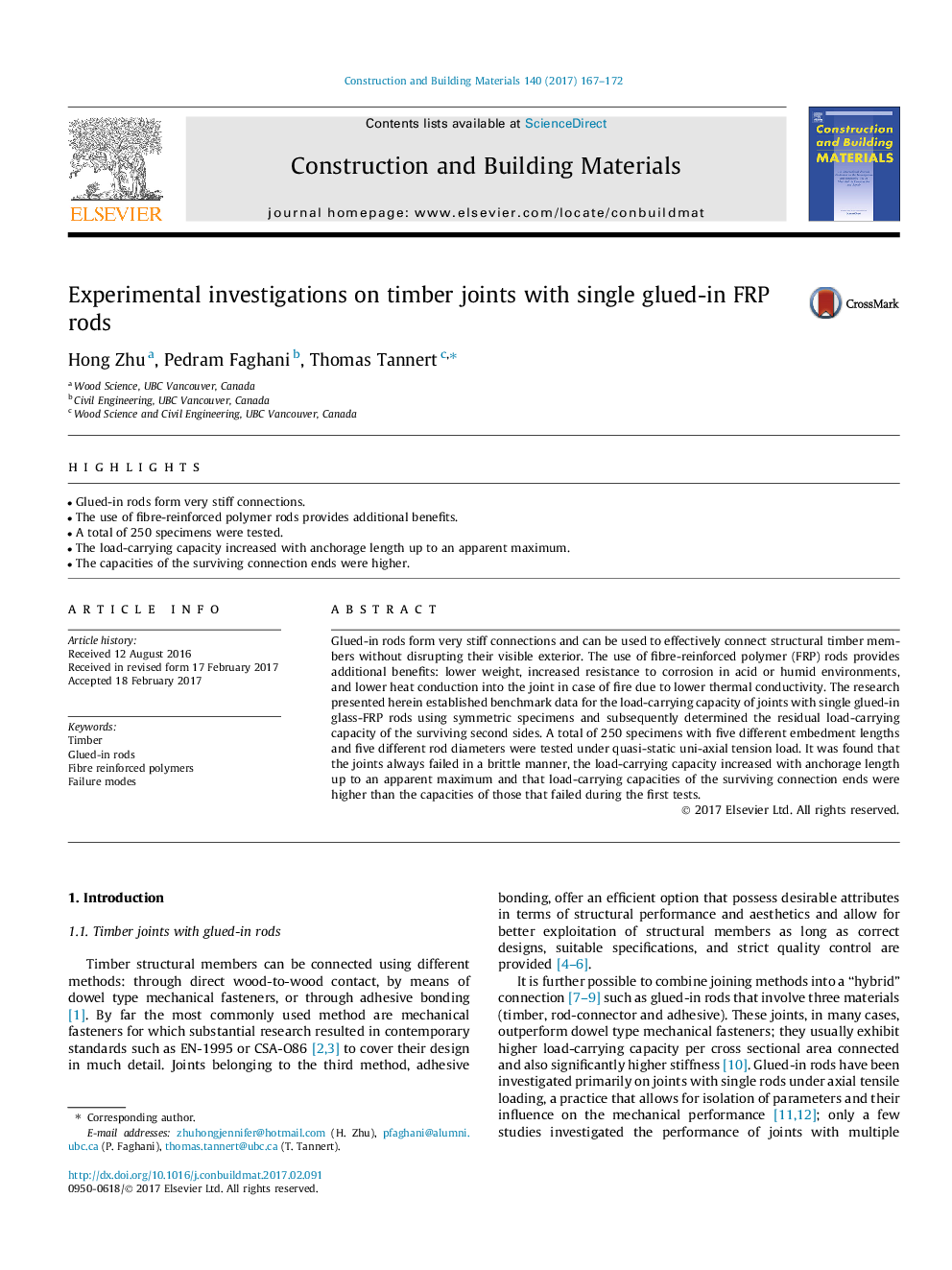| Article ID | Journal | Published Year | Pages | File Type |
|---|---|---|---|---|
| 4918454 | Construction and Building Materials | 2017 | 6 Pages |
Abstract
Glued-in rods form very stiff connections and can be used to effectively connect structural timber members without disrupting their visible exterior. The use of fibre-reinforced polymer (FRP) rods provides additional benefits: lower weight, increased resistance to corrosion in acid or humid environments, and lower heat conduction into the joint in case of fire due to lower thermal conductivity. The research presented herein established benchmark data for the load-carrying capacity of joints with single glued-in glass-FRP rods using symmetric specimens and subsequently determined the residual load-carrying capacity of the surviving second sides. A total of 250 specimens with five different embedment lengths and five different rod diameters were tested under quasi-static uni-axial tension load. It was found that the joints always failed in a brittle manner, the load-carrying capacity increased with anchorage length up to an apparent maximum and that load-carrying capacities of the surviving connection ends were higher than the capacities of those that failed during the first tests.
Related Topics
Physical Sciences and Engineering
Engineering
Civil and Structural Engineering
Authors
Hong Zhu, Pedram Faghani, Thomas Tannert,
